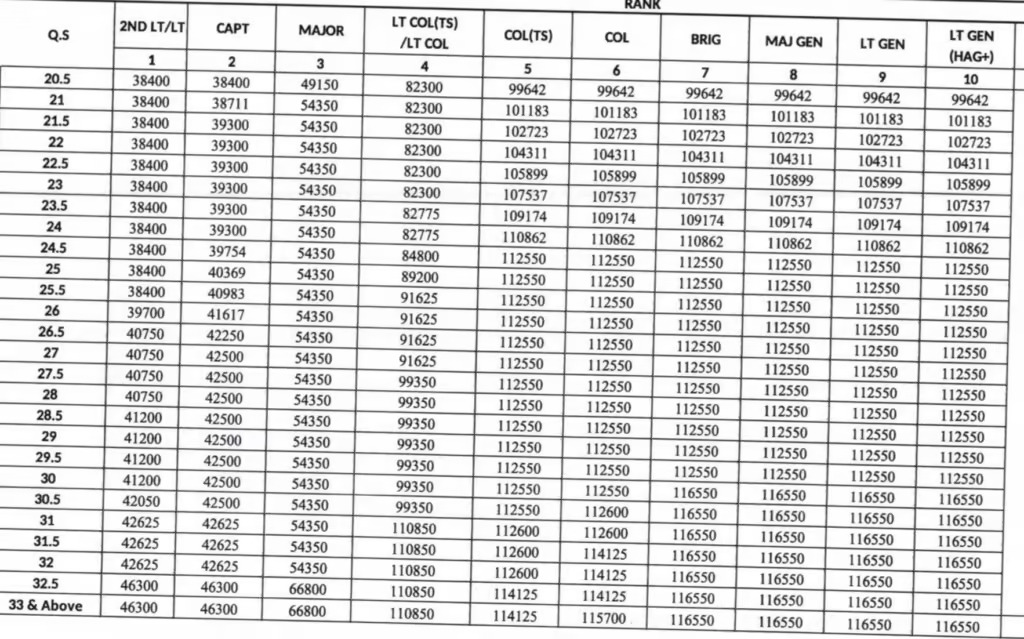In a major update, pensions for officers from the Army, Navy, and Air Force under the One Rank One Pension (OROP) scheme have been revised. Effective from July 1, 2024, the Ministry of Defence announced a rank-wise pension hike for all eligible defence personnel who retired or were discharged before this date. This is welcome news for those serving and retired personnel who have been awaiting pension updates.
However, some categories of personnel are excluded from this revision. This detailed breakdown will help you understand who benefits from the revised rates and who is left out. Read on to find out more!
Who is Eligible for the Pension Hike?
The revised OROP pensions apply to:
Commissioned Officers
Honorary Commissioned Officers
Junior Commissioned Officers (JCOs)/Other Ranks (ORs)
Non-Combatants (Enrolled) from:
Army
Navy
Air Force
Defence Security Corps
Territorial Army
Ex-State Forces
Whether the personnel retired, were discharged, invalided out of service, or passed away in service or after retirement, they are eligible for this pension adjustment, as long as they were receiving a pension as of July 1, 2024.
Who Won’t Receive the Pension Update?
Some personnel groups are not eligible for the revised pensions:
UK/HKSRA/KCIO pensioners
Pakistan & Burma Army pensioners
Reservist pensioners
Pensioners in receipt of Ex-gratia payments
Pre-mature retirement (PMR)/own request pensioners who retired after July 1, 2014
The Ministry of Defence has made it clear that these groups do not qualify for the pension revisions as per the original terms of the OROP scheme.
How Will the Pension Amount Be Adjusted?
Pensioners and family pensioners who were receiving pensions before July 1, 2024, will see their pension amounts adjusted according to government-set scales. These adjustments are based on the rank and group, especially for JCOs and ORs. However, if someone is already receiving a higher pension rate than their counterparts, their amount will not be reduced.
The new rates of pension are based on an average of the minimum and maximum rates of pension for a specific rank and service duration, using live data from 2023 retirees.
Protections for Higher-Ranked Personnel
In cases where the pension for longer-serving personnel is less than that of those with fewer years of service in the same rank, the Ministry has ensured that the higher-qualified service pension will be protected at a higher rate. This means some columns may show equal rates across service durations. Similarly, if a pension in a higher rank is lower than in a lower rank for the same service period, the pension for the higher rank will be protected, ensuring fairness.
What Are the New Pension Rates?
The new OROP pension rates will be released according to ranks and years of service. Pension rates for ranks up to Colonel and for service lengths from 1 to 20 years will be included, and the revision will be indicated for Brigadier ranks and above.
The rates of retiring pension as per OROP revision for regular commissioned officers and women officers of the Army, Navy and Air Force.

The Ministry of Defence’s adjustments are a significant development in ensuring that military personnel receive fair and adjusted pensions, reflecting their years of service and rank.
Rates of OROP pension has been indicated from 1/2 years of service up to Colonel rank and from 20 years of service for Brigadier and above ranks.

Rates of pension has been indicated from 1/2 years of service up to Colonel rank and from 20 years of service for Brigadier and above ranks.

What This Means for Defence Personnel
The OROP revision is aimed at bringing equity to defence pensions, ensuring that veterans receive pension amounts that reflect their service accurately. For many, this means a substantial hike in their retirement income, beginning July 2024.
In this Article-
For the latest news and top of the line assessment of technology, politics, education, sports, follow News To Your Home on X, Facebook, WhatsApp, Instagram.

